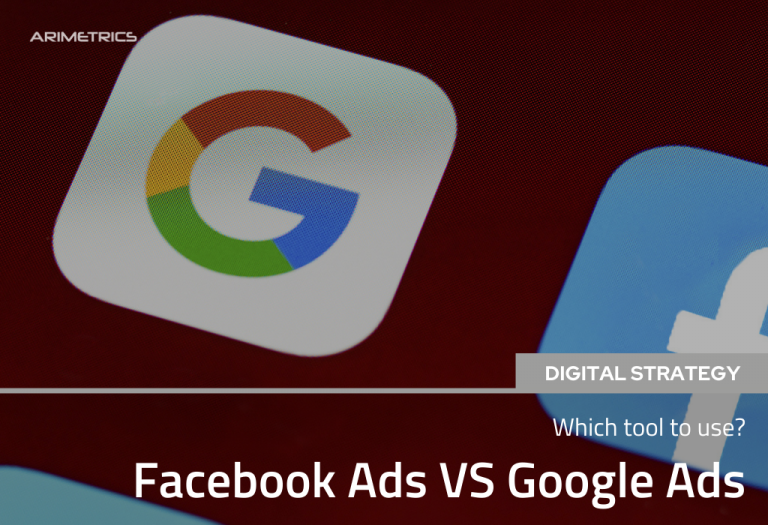Today automation through algorithms is increasingly in vogue (and from my point of view overrated, since there is still no artificial intelligence that replaces a good consultant with experience and common sense), so we are going to focus on a functionality that can allow us to save time on repetitive tasks to dedicate it in those that add value to the campaigns carried out by any Google Ads Agency.
Table of Contents
It is important to emphasize that all the optimizations that we are going to see are made with the Google Ads interface, since in it there are options that are not accessible from the classic version (Google Adwords).
Automation through the Google Ads Interface
It will be enough for us to select the option tools – > Actions in Blogue – > Rules to get to the option we need.
Then, we will only have to press the blue button “+” and we will be displayed all the automation options we have.
There’s also the option to access those options from campaign, group, or keyword pages. We can access the column selection menu, with the option of the 3 vertical points:
Let’s see below the main google ads automationoptions:
Campaign rules in Google Ads
The options in this section and in the following will be very wide, giving play to all kinds of combinations that are useful to us.
We can select:
Rule Type:
- Stop campaigns
- Enable campaigns
- Send email
- Change budgets
Apply to campaigns:
- All campaigns enabled
- All campaigns enabled and paused
- Select campaigns
Condition (We put them all, since the really relevant thing is to realize the immense amount of existing options):
- Campaign
- Campaign name
- Daily budget
- State
- Campaign type
- Views
- Display percentage
- Medium CPV
- Visualizations obtained
- Clicks
- CTR
- Average CPC
- Impressions
- Interactions
- Percentage of interactions
- Average Cost
- Cost
- Bidding strategy
- Campaign subtype
- Bidding strategy name
- Type of budget
- Overall budget
- Auction comparison
- Accounts
- Campaign end date
- Label
- Campaign start date
- CTR Visible
- Medium visible CPM
- Measurable percentage
- Visible percentage
- Distrib. of the impr. non-measurable
- Distrib. of the impr. not visible
- Disitrib. of the impr. Visible
- Measurable cost
- Measurable prints
- Print. non-measurable
- Print. not visible
- Print. Visible
- Percentage of all conversions
- Value of all conversions
- Value of all conversions/click
- Value of all conversions/cost
- All conversions
- Medium CPM
- Pos. stocking
- Average session duration (seconds)
- Freq. average of impr. by cookie
- Freq. average of reprod. by cookie
- Bounce rate
- Ad changes
- All changes
- Bid changes
- Budget changes
- Keyword changes
- Network changes
- Status changes
- Changes in segmentation
- % of impr. lost busq. (presup)
- Percentage of impr. display
- % impr. loss of visualiz. (clasif.)
- Conversion rate
- Conv value.
- Conv./click value
- Conv. value/cost
- Conversions
- Cost/all conversions
- Cost/conv.
- Cost/conversion (current model)
- Average CPE
- Multi-device conversions
- Conversion rate (current model)
- Conversion value (current model)
- Conversion/click value (current model)
- Conversion value/cost (current model)
- Conversions (current model)
- Cost/all conversions
- Average CPC
- Average CPE
- Medium CPM
- Medium visible CPM
- Average CPV
- CTR
- Relative CTR
- CTR Visible
- Accounts
- Click-through rate
- Average session duration (seconds)
- Unique viewers (cookies)
- Campaign end date
- Campaign start date
- Freq. average of impr. by cookie
- Freq. average of impr. per user
- Freq. average repr. by cookie
- Bounce rate
- Ad changes
- Bid changes
- Budget changes
- Keyword changes
- Network changes
- Status changes
- Changes in segmentation
- % impr. lost search. (presup.)
- Percentage of impr. display
- % of impr. loss of visualiz. (clasif.)
- Conversion rate
- Conv value.
- Conv./click value
- Conv. value/cost
- I like it obtained
- Additions to playlists obtained
- Times the video has been shared
- Subscribers obtained
- Percentage of expansions
- Gmail forwarding
- Saved Gmail messages
- Clicks on Gmail to go to the website
- Unique cookies
- Unique users
- Freq. average of impr. per user
- Invalid click-through rate
- Invalid clicks
- Percentage of invalid interactions
- Invalid interactions
- Chat conversion rate
- Print. of the message
- Chats
- Pages/session
- % of new sessions
- Phone calls
- Phone number printing
- PTR
- Relative CTR
- Search impression quota sub. Abs.
- % impr. loss of visualiz. (presup.)
- Click-through rate
- % of impr. Concord. exact search.
- Percentage of impr. search
- % impr. lost search. (clasif.)
- Value / all conversions
- Value/conv
- Value/conversion (current model)
- Average/print time.
- Display time
- 100% played video
- Video played up to 25%
- Video played up to 50%
- Video played up to 75%
- Unique viewers (cookie)
- Conv. post printing
Define the frequency to start your action:
Here we will mark the frequency we need for our rule.
- Once/daily/weekly/monthly using data from same day/day before/same week/week before/7 days before/14 days before/same month/month before/30 days before/from always
Email results:
We will choose if and when we want to be notified of the outcome of the rules.
- Every time this rule is run / Only if there are changes or errors / Only if errors occur / No emails
As we can see we have an impressive amount of concepts by which to segment / automate our Google Ads campaigns.
Let’s see below some examples of campaign rules
Example campaign rule:
“On weekends we will stop campaigns that are suitable, but have not had any conversion during the last 7 days”
Ad group rules in Google Ads
The operation of ad group rules is analogous to that of campaigns, with slight variations
Rule Type:
- Stop ad groups
- Enable ad groups
- Send email
- Change bids for ad groups
Apply to groups:
- All ad groups enabled
- All ad groups enabled and paused
- Selected ad groups
Condition:
The same metrics are repeated as in campaigns, although additional ones appear such as:
- Ad rotation
- Phone calls
- Phone number printing
- PTR
- Tracking template
All other options are the same as in campaigns.
Example of a group rule:
“Review weekly and send an email on Mondays at 9:00 warning of groups with ad rotation marked as “Do not optimize” that have a CTR of less than 3% during the last 7 days”
Keyword rules in Google Ads
Keyword rules follow the same pattern with slight variations
Rule Type:
- Stop keywords
- Enable keywords
- Change keyword bids
- Send email
Apply to keywords
- All keywords enabled
- All keywords enabled and paused
- Keywords of selected campaigns
- Keywords for selected ad groups
Condition:
In addition to metrics included in the two previous sections, we have some default filters and new metrics:
- Keywords are below first page bid
- Quality keywords but with little traffic (quality level > = 5 (includes “-“); impressions < = 1000)
- Clicks adic. est./sem. (bid +50%)
- Clicks adic. est./sem. (bid +300%)
- Clicks adic. est./sem. (bid of -50%)
- Comparati
- Estimation of additional clicks per week (bid for the first position)
- Puja est. at the top of the page
- Auction comparisons
- …
Example keyword rule:
“Raise daily bid at 00:00 10% with a limit of € 10 when keywords with AW label are below the first page bid, notifying by email each time the rule is executed”
Other Google Ads rules
In this article we have dealt only with the first three types of rules, but by mastering these we can get an idea of how the others work:
- Ad rules
- Display keyword rules
- Theme Rules
- Site Rules
- Hearing Rules
- Age range rules
- Sex rules
- Parental status rules
- Income Rules
Conclusion
We have seen that the possibilities of automation of Google Ads through rules are very wide, and if there is that option you should take advantage of it yes or yes. We have also verified that there are more than fifty metrics that can be used, which gives us an idea of the degree of sophistication that can be reached, far beyond playing with matches and bids, which is what the managers of 90% of Google Ads accounts are dedicated to.
Your Google Ads account has a lot of potential for improvement, and starting today, you can start improving it with automated rules.










